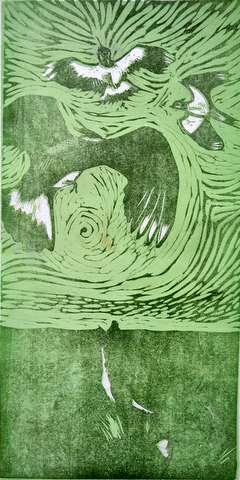Progress on the pied shieldbugs:
I re-positioned the main shield bug a little further away from the bee to give better balance to the piece. I had spent quite some time watching these tiny bugs and their interaction with other insects. It’s a fascinating micro world of uneasy relationships. Who is predator and who is prey? The shieldbugs did not seem to mind the bees apart from just having to get out of their way. I saw one tumble to the ground, knocked off a leaf by a huge bumble bee landing on a flower and bending the whole flower spike down. It flipped back like a catapult.
The painting of the bugs was fiddly as the largest one is only 1 inch long .
I love the way these tiny bugs get to the edge of a leaf and peer over. Bees and beetles do the same, as if contemplating the vista spread out before them. It’s a long drop but having wings must give you an extra sense of confidence.

The two bugs and the bee…. Next the flower and background. Lots of decisions to be made at this stage…

























